FIFA World Cup Qatar 2022: Prepare for the Most Digital World Cup
PUBLISH DATE: 19 August 2022
The 22nd Edition of FIFA World Cup 2022 is about to begin soon. The World Cup stimulates a frenzy of marketing activities – both official and unofficial. It is about to kick off before Black Friday, and with the final seven days before Christmas, making the market more challenging but unique for the advertisers, and marketers.
Qatar World Cup Audience is Projected at 5 Billion this year. According to the official broadcast coverage of the 2018 World Cup, a combined 3.572 billion viewers – more than half of the global population aged four and over – tuned in to world football’s ultimate competition. One of the biggest sporting events in terms of viewers is a unique and great opportunity for advertisers to connect with the audience and make an impact.
The key to connecting with the audience during game time is to understand how they engage with the content, and who they listen to. Here we have highlighted best practices for you to meet your goals.
This World Cup Win Hearts and Minds of the Consumers
Research from Trends shows that brands need to show diversity, promote gender equality, take a stand on social issues, and show sustainability in their ads if they are to win the hearts and minds of their target audience. The research also found that leveraging high-attention premium publishers during the tournament will be a key highlight for advertisers, as fans go check the scores online (71 percent), while some read online articles about the matches (51 percent).
This will be a huge opportunity for the brand as billions of people intend to follow the game. It is always a massive draw for the brands as the consumers are stuck to their screens in the hope that football will, once again, or this time come home.
Some Interesting statistics to see:
- 65 percent of football fans believe that sponsors/ partners of the World Cup to have a business model that supports sustainability.
- 75 percent of UK consumers intend to watch football at home which means for FMCG brands these consumers will buy alcohol (65 percent), and snacks (65 percent) to see them through the game.
- Qatar 2022 will be the first World Cup which will take place in an Arab nation.
- In the year 2018, the sporting event added an estimated $2.4 billion to the global advertising market
- Around two-thirds of the World Cup’s market value comes from Europe.
A Tip for Marketers: Go Beyond Core Football Fans
There is no denying that the appeal of World Cup goes well beyond hardcore football fans. Considering this, advertisers are advised to develop creative that speaks to a broader audience to stand out from the wild competition.
Take a Bet on ‘Crunch Time’
More and more viewers are consuming football content on YouTube. Football-related searches on Youtube increased to 80% since Euro 2020. More searches mean more viewing. And after years of not being able to watch sports in person, there is definitely an adrenalin rush among people to go back to the stadium to watch the match live.
The online offering of the 2018 FIFA World Cup surpassed its offline one. The event welcomed three million in-person attendees, however, it also saw three billion Google searches, and five billion views on YouTube for World Cup-related content.
How to Connect with Fans While They Are Online?
- Connecting with the audience after a match is over can be a bit difficult. For Search campaigns, Mirrors 360 by Silverpush deploys your ads where your fans are searching. Football fans are looking for match highlights, goal scores, and more content online after the match is over.
- Using AI technology, high-performing, and emerging queries on top of your exact/ phrase keywords are identified, allowing your ad to appear on searches which are closely related to the meaning of your keyword.
- In addition to this, the deep learning technology also identify the headline and description combinations to ensure that your brand delivers the right ad to the right person.
Kick a Goal Across Different Screens
The modern football fan is like any other shopper, who is happy to jump from one device to another to find information until they meet their needs. However, younger demographics are a little difficult to crack. Getting their sporting fix online, there is no surprise that ad campaigns combining TV and YouTube can help advertisers to achieve some mind-blowing results.
In comparison to TV alone, a mix of 9:1 of TV and YouTube can yield an additional 33% of reach. Isn’t that a great number to see for your ad campaign?
Connected TV (CTV) has already started to change the game of digital advertising. Giving brands additional time to interact with their consumers, CTV advertising could be a game changer for many – especially during the peak shopping season. Reports have suggested that 60% year-over-year growth of people watching football content on the platform via their TVs. Clearly indicating that the TV screen is the fastest-growing screen for YouTube watchtime.

Interact with Excited Football Fans During Game Time
Silverpush offers three advanced AI solutions that solves the major challenges of the brand –
- Reaching the audience at key moments without hampering their entertainment
- Deployed ads which are relevant to the target audience, thus keeping the engagement with the brand intact.
Eager to know the names of these solution products? Let’s take a look at these products and monetize the excitement of FIFA fans.
Parallels Sports Sync
Silverpush’s sports sync helps brands maximize their brand exposure by triggering digital ads based on real-time sporting events. Advertisers can now automatically deliver cross-channel ads coordinated with trigger game moments like halftime; team moments such as scoring a goal, timeout, or penalty; and player moments such as celebrating a goal, or winning a trophy in the FIFA World Cup.
For the brands, the fact that they have the ability to sync digital messages with real-time game moments offers relevancy for the product. It provides connected context to search, social, and display experiences, a game-changer for driving excellent results. And Parallels Sports Sync by Silverpush is at the forefront of these market trends.
Parallels Sports Sync truly guarantees to seize the moment and help the brands to deliver the right ad to the right audience on the right device at the right moment.
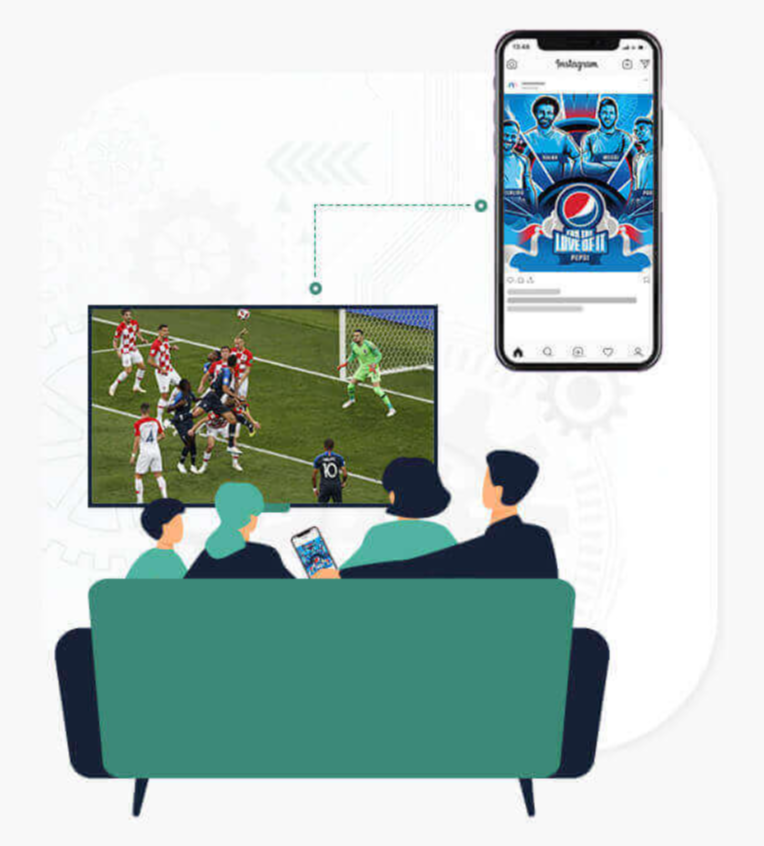
Mirrors
Mirrors by Silverpush is the world’s first in-video context technology. The artificial intelligence (AI)-powered technology delivers more relevant in-video ads by identifying key contexts like celebrities, brands, objects, emotions, and everything related to football. It places your ad when consumers are most likely to engage without annoying the game enthusiasts. Mirrors has a huge amount of data already pre-processed and curated by the AI/ML models. Also, it has years of data for YouTube to boost the ad performance of brands.
This AI technology is available on the following platforms –
- Youtube
- Social Media
- Open Web
So, now the question is what does this mean to you? Honestly, a whole package, let us try to list them all.
- Precise content curation
- Granular audience targeting
- Higher engagement
- Enhanced user experience
- Positive brand recall
- Data privacy compliance

End Note
Silverpush has a goal to put you where your audience is without hampering your brand reputation or invading user’s privacy. Remember, it’s not every day that half of the world is watching your ad. Contact us and let us help you hit the back of the net with our World Cup advertising deep machine learning solutions.
FAQs on Mirrors
PUBLISH DATE: 29 August 2022
In today’s time, it’s tough to imagine a world without the Internet. As of 2022, 69% of the world’s population, or 4.9 billion people, actively uses the internet.
Marketing is and will always be referred to as reaching customers where they are. TV commercials, print advertisements, and billboards are all attempts to do that. Nearly every business benefits from an online presence.
The key is to reach customers – and potential customers – in their right frame of mind. With more and more consumers shopping and researching products online, it’s become critical for companies to recognize the importance of contextual advertising. Considering that over 4.9 billion people are on the Internet, it’s a great opportunity for agencies to reach leads that are looking for their business.
The question is in the crowded space of the Internet, how are agencies and advertisers supposed to outshine their competitors?
That’s where Mirrors by Silverpush comes in.
What is Mirrors?
With user privacy gaining importance, advertisers must find a solution that does not intrude on users’ privacy. Mirrors is a platform that targets contextually by leveraging AI-powered human-augmented technology. Mirrors also ensure content-aligned ad placement as well as 100% brand safety and suitability, which is unique to each brand.
What are the Platforms on Which Mirrors Work?
Programmatic
- YouTube
- Non-YouTube Videos
- Display (Web pages and Apps)
Social
What are the Pillars for Mirrors by Silverpush?
The four basic pillars and processes for Mirrors are as follows –
1. Contextual Targeting
Custom targeting & exclusion themes are defined for each campaign, based on brand objectives and specific KPIs.
2. Brand Suitability
A dedicated team identifies in-video contexts basis defined inclusion/exclusion themes and accurately classifies content at video level into relevant buckets including unsafe content.
The platform further analyses human-classified content, enabling more granular buckets – for instance, video content featuring multiple contexts.
3. Custom Contextual Creatives
Video or channels’ performance metrics, safety assessment, engagement levels, organic influence, and growth momentum.
4. Final Ad placement
Ad is finally placed across relevant, brand suitable, and high-performing content.
How Does Mirrors Work?
Mirrors work by identifying celebrities, brands, objects, places, actions, on-screen text, and audio for precise targeting. It is explained below how it works on various platforms:
Mirrors for YouTube
Video has taken center stage as 95% of an ad message is retained by video while only 10% is in the text. Moreover, 73% of users agreed that contextual ad complements the video experience, compared to 55% at channel level & 47% at audience level targeting.
Thus, Mirrors for YouTube identifies faces, brands, objects, places, actions, on-screen text, and audio sentiment to serve ads in line with video content, that users are actively engaging with. Our human-augmented AI technology accurately identifies harmful contexts across categories including nudity, hate speech, smoking, alcohol, violence, and more. It intelligently blocks only unsafe ad placements without over-blocking or killing reach.

Click Here to see the demo for Mirrors.
Mirrors for Social
During the second quarter of 2022, Meta has stated that 3.65 billion people were using its core products (Facebook, WhatsApp, Instagram, or Messenger) each month. With roughly 2.93 billion monthly active users in 2022, Facebook is one of the most used online social networks worldwide. Mirrors on Social works in the following way –
- A relevant brand-safe page has been selected and processed to derive contextual signals, interest, etc. using AI & ML, and NLP models.
- Then, relevant ads are targeted based on the signals.
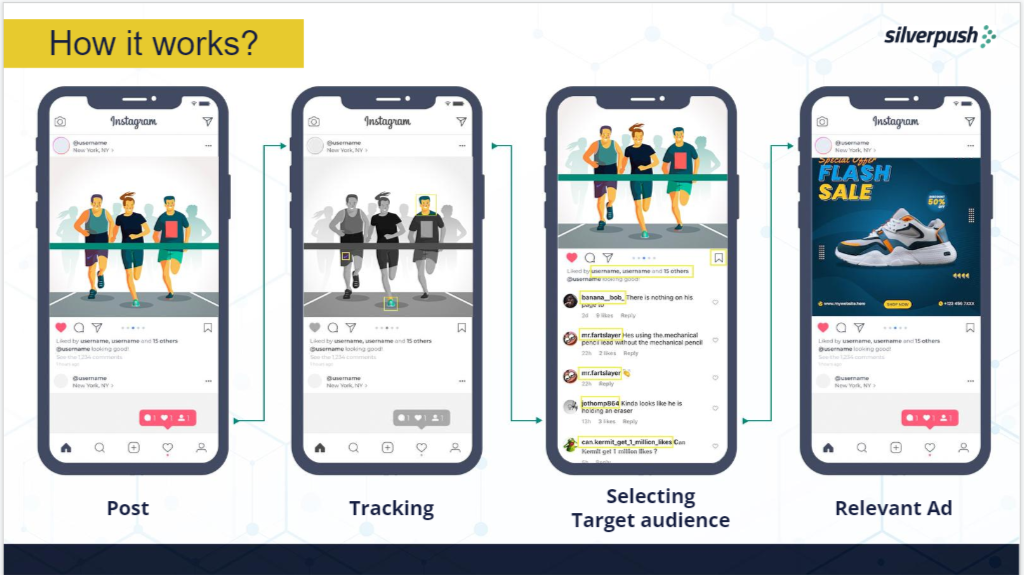
Mirrors for OpenWeb
Advertisers and brands can unlock the full context and contextually target the most relevant and suitable text, image, and video content.
- Mirrors AI technology analyzes the complete content like Videos, Text, & Images to create contextual content buckets.
- The AI technology then places video ads in the relevant content pages & OTT videos – in-stream and out-stream.
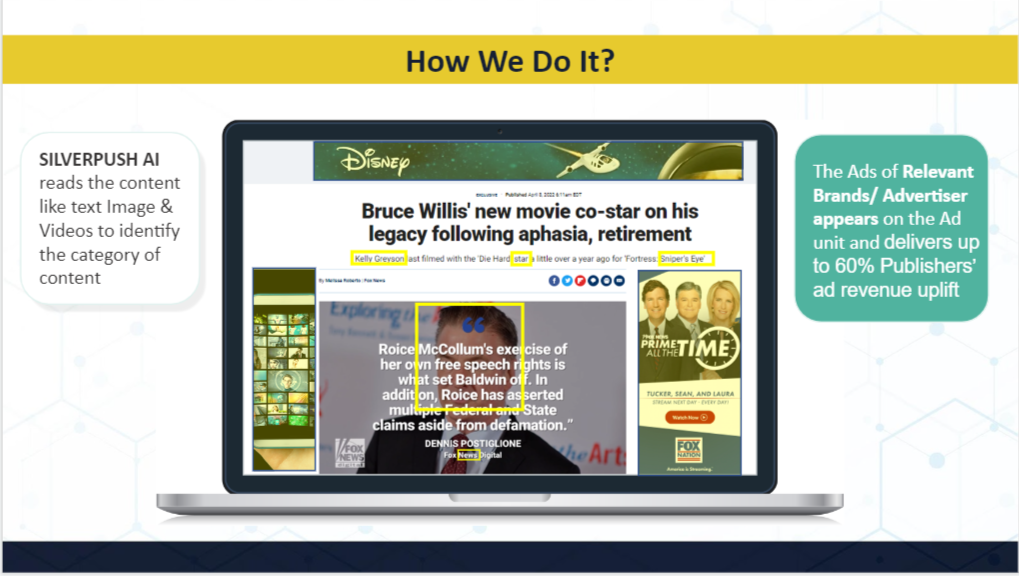
Why Should You Choose Mirrors?
Traditional methods of keywords and affinity based targeting without context can lead to ad waste. Mirrors is a platform that is devoid of these problems.
- Minimize Ad wastage
- Higher effective ROI
- Enhanced user experience
- Positive brand recall
How to Reach Us?
To learn more about us and our products, you may call us or follow us on LinkedIn or Facebook for detailed insights.
Digital Video Advertising is Ruling the Next Decade
PUBLISH DATE: 22 August 2022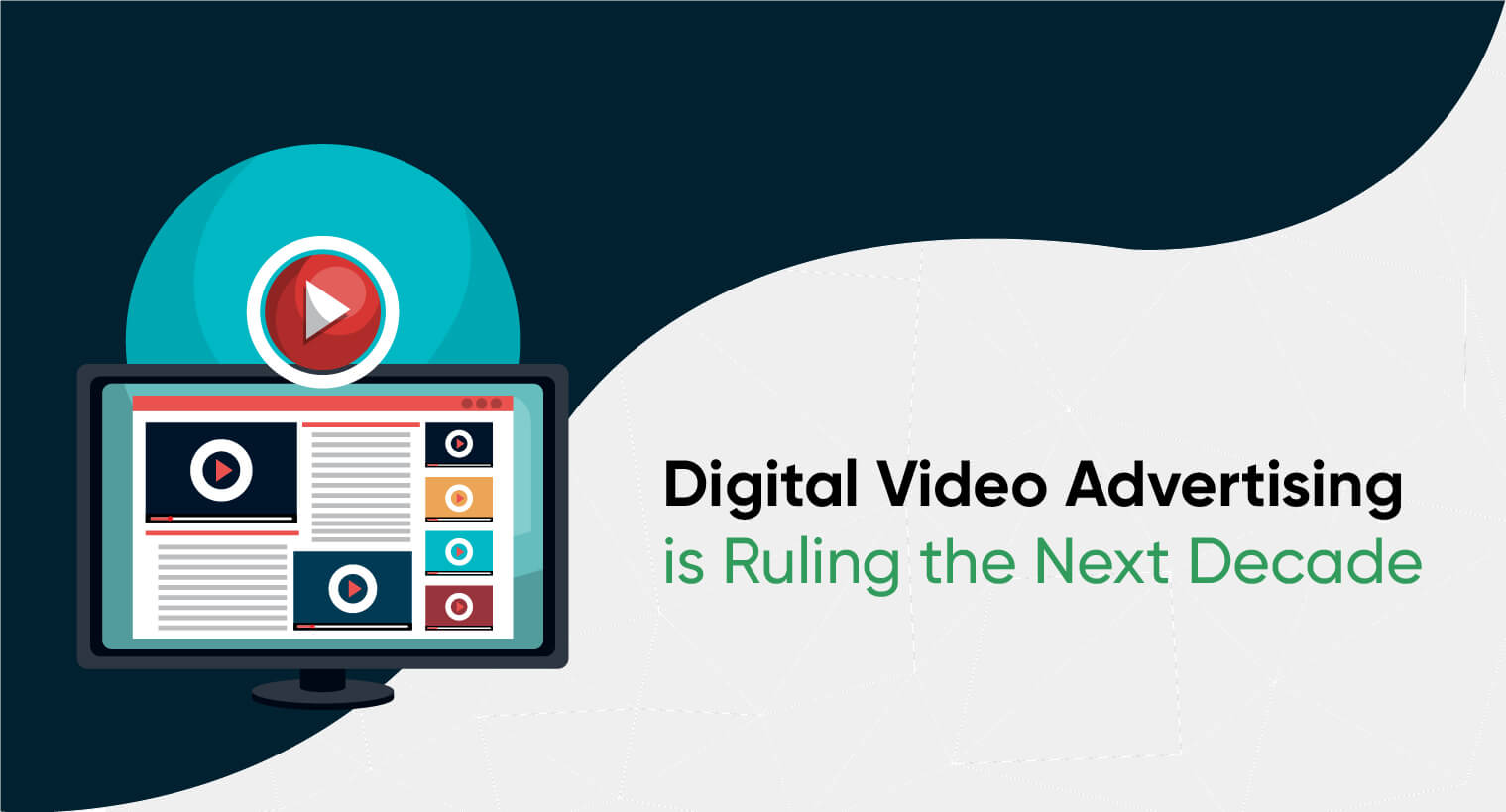
Are you using digital video advertising as part of your marketing strategy? Because your competitors certainly are!
Every day, viewers viewed over 1 billion hours of video on YouTube, according to the company. Nowadays, browsing the internet is just like viewing a never-ending cycle of videos.
The modern web is now driven by video in ways that did not seem possible even 15 years ago, owing largely to the pervasiveness of personal mobile devices and ubiquitous, dependable high-speed internet connections.
Digital strategists are using an incredible quantity of video content for their insatiable audience to consume at will on all sorts of websites, from social platforms to news organizations to corporate pages.
We’ve made a lot of progress since the late 2000s when the only place to watch videos on the internet was YouTube.
However, there are now several sites where the audience can view videos. Snapchat is one of the fastest-growing social media platforms, thanks partly to its video stories, and Instagram has seen success by adopting a similar feature on its site.
According to research, over 86% of organizations used videos for marketing in 2021. Video advertising may increase your brand’s online exposure in search results, social media, and elsewhere on the internet.
Top 5 Reasons Why Video Advertising is Going to Dominate the Next Decade
Whether you open your laptop, unlock your phone, or turn on your smart TV, you can’t avoid video content, so embrace it. ‘Digital video advertising will rule the next decade,’ they predict. Read the top 5 reasons listed below to know why.
Online Content is Driven by Videos
It is evident that video dominates internet traffic, with video expected to account for 82 percent of worldwide internet traffic by 2022. Every month, 85 percent of internet users watch at least one online video, and 54 percent want to see more video content from their favorite brands and organizations. This is a large market of content-seeking consumers, so it’s no wonder that 87 percent of marketing professionals utilize video advertising.
High Engagement is from Video Advertising
Video content has no competition in terms of social media engagement. When compared to photo postings, video posts had 135 percent more organic reach on Facebook. Similarly, video postings on Instagram received twice as much interaction as images. The more your involvement, the more eyeballs will be drawn to your goods. You’ll have the highest chance of reaching the most influential audience if you use video content.
Sales are Boosted by Video Advertising
According to a recent consumer survey, 84 percent of people were driven to buy a product or service after seeing a video. Prioritizing video marketing will enhance brand recognition and pay dividends in the long run. 73 percent of customers say a brand’s social media presence affected their shopping decisions, while 84 percent said a brand’s video influenced their decision to buy a specific product. Clearly, video advertising is profitable, since 88% of video marketers are pleased with the ROI of their social media initiatives.
Video Advertising doesn’t have to Be Expensive
Many business owners still associate video advertising with television, where a single ad might cost thousands of dollars.
Because of the internet’s convenience, video advertising does not require nearly as much financial commitment as it once did. User-generated content may be your best choice if you’re searching for an inexpensive approach to leverage video advertising to develop a personal connection with your audience.
The most important thing to remember when using video is that you are achieving your marketing objectives. Whether it’s increasing your social media following, communicating with existing consumers, or increasing sales, video content may be a great weapon in your marketing arsenal.
Videos can be Shared
One of the most appealing aspects of video content, particularly on social media, is how easily it can be shared. Text and photos are shared 12 times more than social video. Video content is shared by 92 percent of mobile video viewers, and videos are six times more likely to be retweeted than images, according to Twitter.
Digital Video Advertising is Growing
Video advertising is one of the most popular forms of advertising nowadays. Digital video advertising is anticipated to reach $20.1 billion in 2022, with expenditure on video commercials reaching $9.26 billion by 2024. Companies have discovered that retraining customers to accept and even anticipate video at every step may have several benefits.
Because video has become such a natural part of the web surfing experience, advertisers can utilize it to instantly engage their audience as if it were something they had intentionally sought out.
Drive Attention with Contextual Targeting
PUBLISH DATE: 17 August 2022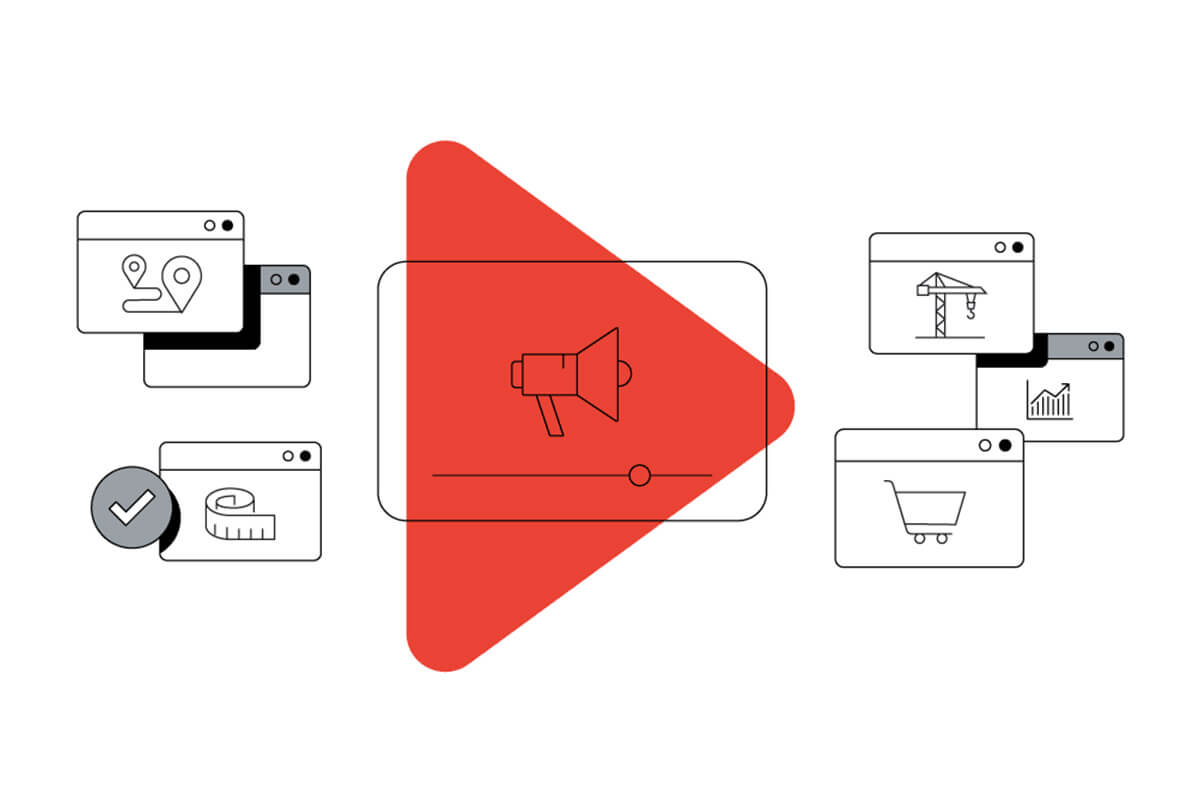
In today’s world, it is not an easy task to grab attention of consumers. Besides their own personal tasks, they are surrounded by a lot of content on their smartphones. They tend to focus on only the content that interests them, ignoring other content posts.
So, if an unrelated ad appears in front of a person watching a cricket match, he is definitely going to get irritated and angry. He would question why such an ad is being shown, which is totally out of context of what he is currently watching.
Consumers’ tolerance for irrelevant ads is decreasing at a fast rate and so is the return on investment for those marketers that show such ads. As some of the web browsers have phased out third-party cookies and Chrome is going to do this in future, the third-party party- based ads that follow consumers from one website to other and irritates them, are destined to come to an end.
Contextual Advertising is the Solution
Contextual advertising serves ads that match with the content being consumed. This makes them highly non-interruptive and non-irritating to consumers. By serving contextually relevant ads, brands boost engagement with audiences and increases the chances of conversion.
A research survey was conducted in which eighteen hundred consumers based in the United Kingdom took part. The survey considered different types of interest categories, namely – beauty, automotive, and food and drink. On the basis of the ad targeting strategy deployed, the survey participants were grouped into four classes, viz. – contextual targeting, no targeting, demographic-based targeting, and interest-based targeting.
The survey found that participants under the contextual targeting group showed two and a half times more interest. Participants who viewed contextually relevant ads had a thirty-two percent more chance to act in comparison to those participants who were grouped under demographic-based targeting.
The research survey shows that contextual targeting not only helps in triggering a sale, but also arouses a positive feeling of receptivity regarding the interest category among consumers. Contextual ad targeting also makes people positively disposed to ads.
Contextually placed ads drive sale of niche goods. When consumers are consuming niche content along with contextually relevant ads, then their chances to buy niche products increases significantly. By using the contextual approach to digital advertising, marketers are able to reach even previously unidentified audiences.
As consumers are paying more attention to the quality of ads that they are served with, the traditional random ad targeting cannot meet the purpose. The only way for marketers to serve ads that are non-irritating and attention-grabbing is to resort to contextual advertising.
“No Compromises with Personal Data” Why is Context Vital for the Future of Digital Advertising?
PUBLISH DATE: 16 August 2022
News related to data privacy violations by major organizations in the world like Google, Zoom, and Facebook has made headlines several times now.
The third-party tracking and monitoring of data online, much of it because of data aggregation, profiling, and selective targeting has become a major issue for users.
This has led to various data privacy laws being passed by government institutions all over the world.
Majorly it was the 2020s that brought a significant transformation in the advertising industry.
The California Consumer Privacy Act (CCPA) entered into effect on January 1, 2018, two years after the European Union passed the GDPR to address consumer concerns about access to personal data.
This left brands, ad tech vendors, and publishers scrambling to figure out what they need to do to comply with these regulations.
Then, just after a couple of weeks, Google announced that its Chrome web browser, walking on similar roads by Safari and Firefox, would eliminate cookies by January 2022.
The matter remains, what is the reason for this major upheaval?
It’s the need for privacy of personal data, of course!
What do you Understand by Personal Data?
The main motive behind GDPR (General Data Protection Regulation) is personal data. However, many organizations are still unaware of what “personal data” actually means which makes it necessary to define it.
Any information that clearly identifies a single individual is defined as personal data. According to the GDPR, information is considered personal data when an individual can be identified, directly or indirectly, “by reference to an identifier such as a name, an identification number, an online identifier, location data, or one or more factors specific to that natural person’s physical, physiological, mental, economic, genetic, cultural, or social identity.”
That is a lot of information. In some cases, an individual’s IP address, hair color, employment, or political beliefs may be considered personal data.
To clarify, personal data includes:
- Dates of birth, Social Security numbers, phone numbers, and email addresses are examples of biographical information or current living situations.
- Looks, appearance, and behavior, such as eye color, weight, and personality attributes
- Data and information concerning education in the workplace, such as pay, tax information, and student statistics.
- Religion, political viewpoints, and geo-tracking data are examples of private and subjective data.
- Health, illness, and genetics, including medical history, genetic data, and sick leave information
Contextual Plays a Key Role in the Future of Digital Advertising
The need for connecting with people and delivering ads without relying on personal data has forced the advertisers to reimagine a futureproof modern solution to help brands win in a cookie-less world.
Contextual targeting has proved to be that solution.
The COVID-19 times has also been a difficult time for advertisers as they needed to protect their ads from being displayed on content related to coronavirus-related content.
These are some of the reasons why contextual targeting is getting a strong second look.
How Contextual Targeting can Solve the Privacy Issue?
Despite the fact that behavioral targeting offers various advantages, such as a greater click-through rate and conversion rate. However, all of this by putting consumers’ privacy at risk. This is something that must not be overlooked.
As brands, ad tech companies, and publishers plan for the next generation of digital advertising, the knowledge provided by contextual targeting is gaining traction, owing to the fact that it depends directly on the text, photographs, and videos currently present on the page of content being consumed.
It claims to deliver the right ad, to the right person, at the right moment, and does it diligently. It focuses on the visual elements of web sites, employing proprietary computer vision technology to collect visual aspects and couple them with text to give critical insights into the context in which businesses advertise.
Contextual intelligence is equally as powerful as third-party data when paired with the first-party data that marketers and publishers already have. Furthermore, brand safety is a result of contextual targeting.
Conclusion
One of the most difficult challenges is getting businesses, ad tech firms, and publishers on the same page in order to prepare for a cookie-free future. Many marketers continue to work the old way, believing that 2022 is further away than it is, just because they need the income, especially now.
Contextual with brand safety and a proper knowledge of pictures and content at the page level will open up the internet and provide additional advertising chances for publishers and newspapers with exceptional content—including hard news, which is frequently barred wholesale.
Cookieless Future Looks Bright for Digital Advertisers
PUBLISH DATE: 16 August 2022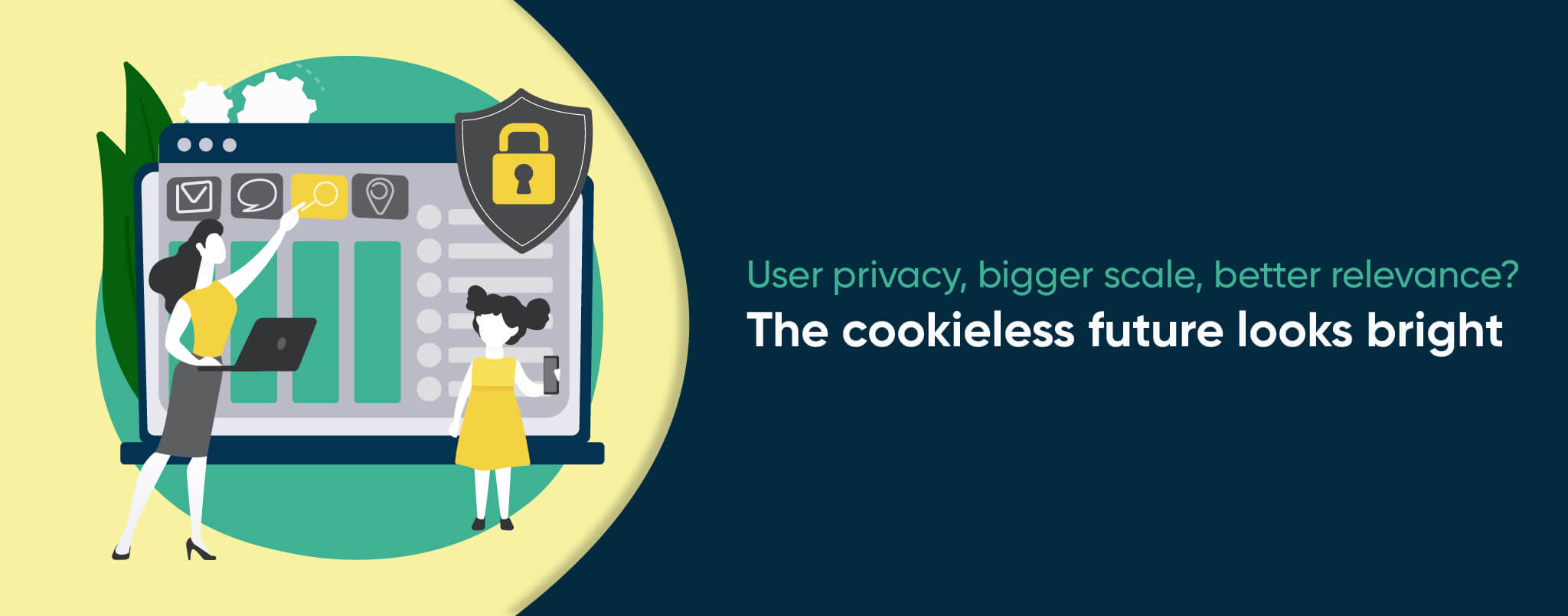
Even if Google has delayed third-party cookies deprecation till 2024, these are going to go away. Love them or hate them, it’s high time now that brands and marketers should look for a different alternative to reach their target audience complying with user privacy. With the help of advanced AI and deep machine learning technology, programmatic, and more, advertisers have had some major gains and some sacrifices along the way as the digital advertising ecosystem has evolved.
Definitely, it’s not the death knell for identifiers. However, it has come to light the importance and urgency of finding different solutions – which don’t use personal data. Though some of this is a major crisis, but what if this is an opportunity?
In concepts, personalized targeting is not a bad idea to reach the target group, however, it might not be the best approach as it limits the reach. Third-party cookies data enabled the digital advertisers to learn about the consumers overall online behaviors beyond to what they could gauge with first-party data, to what they’ve bought. With this detailed data, advertisers could easily build robust visitor profiles. All of this data helps them to create a retargeting list which is then further used to send ads to past visitors or people with same interest.
To overcome the challenge of reaching only a limited audience, contextual advertising is the answer. The logic of contextual advertising is that it effectively focuses on user events, meaning, it is focused on the content of the websites users frequent.
What else could replace cookies? Some options on the horizon that leverage first-party cookies are –
Hashed Emails – These are effectively email addresses which a user consent to provide to a website. These, in turn are then encrypted into a unique 32-charachter code to protect their privacy.
Unified ID – Universal identifiers are based on a permanent user identifier like an email id that is used across websites, channels and other various platforms.
FLOC – Google’s Federated Learning of Cohorts (FLOC) groups the users with other individuals who had the recent browsing activity. Advertisers can then use this information to target ads based on the collective interests of these groups of people.
There has been a lot posted about cookie less digital advertising. Some of the major industry and business outlets have posted about the virtues of contextual targeting. They have described it as great opportunity for the brands and agencies to reaching their audience under the right context at the right moment.
Silverpush Partners with IRIS.TV
PUBLISH DATE: 11 August 2022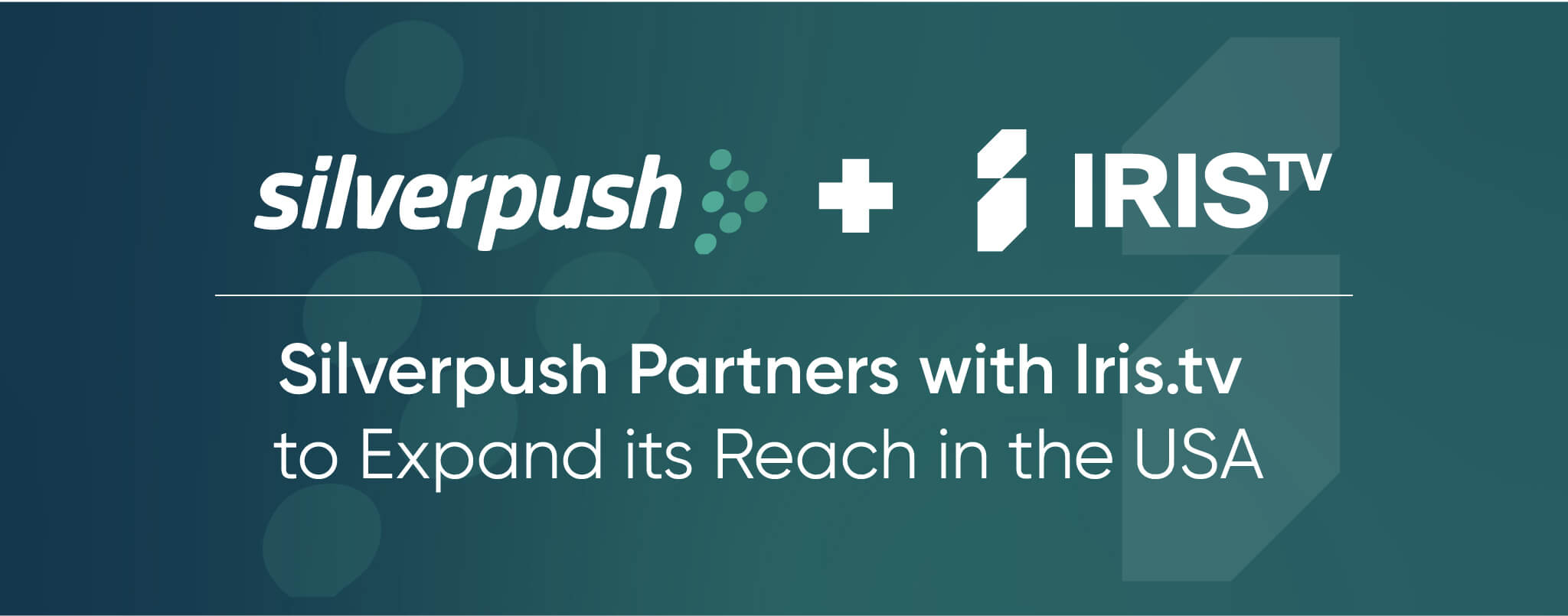
Silverpush, the leading AI powered adtech solutions provider for brands and agencies, announced today its integration with IRIS.TV, the leading video data platform. Marketers will now be able to use Mirrors by Silverpush solutions to target relevant, brand-safe video inventory across thousands of IRIS-enabled™ premium publishers and billions of monthly video impressions worldwide.
Mirrors enables precise, transparent, and effective brand safety and suitability solutions for online videos through its advanced AI and machine learning capabilities. With this partnership, Silverpush will further bolster its leadership position in contextual marketing, which will now be applied to CTV inventory through IRIS.TV’s video data platform.
IRIS.TV simplifies the complexity and fragmentation of the video ecosystem across CTV and premium digital video, providing access, for the first time, to video-level data. Before IRIS.TV, contextual and brand-safety data for videos was only available by analyzing the text on a web page, and was an impossibility for CTV. Now, marketers can “think inside the video” with the transparency to confidently buy CTV and premium video inventory based on video-level contextual, brand-safety analysis and the specific topical nature of every video, in concert with Silverpush.
“For brands looking to shift their linear television investment to Connected TV, transparency and brand safety should be the top priority. With our partnership with IRIS.TV, brands can now leverage our contextual data to ensure every dollar spent on premium and CTV video aligns with industry-standard safety and suitability frameworks while having full transparency into their buys in these preferred video buying environments,” said Kartik Mehta, Co-Founder and COO of Silverpush.
“By making video-level data accessible, we create better viewing experiences for audiences, enhance publisher inventory and deliver high advertising outcomes in the ecosystem,” said Field Garthwaite, Co-Founder and CEO, of IRIS.TV. “As an industry leader in contextual targeting and brand suitability, Silverpush offers its customers the ability to unlock video-level context, ensure brand safety, increase ROI, and make better decisions across more streaming video and CTV campaigns.”
IRIS.TV unites thousands of potential integrations into a single video data platform, bringing together publishers, contextual data partners, ad servers, and SSPs into a ecosystem that allows publishers’ video content to be analyzed and categorized into industry-accepted brand-safe and brand-suitable segments that can be purchased by marketers through any DSP via direct, private marketplace, and open auction buying.
About Silverpush
Silverpush offers artificial intelligence powered advertising technology solutions. Helping some of the largest brands globally, to understand and reach their customers, like never before. With its deep learning and computer vision powered platform Mirrors, Silverpush helps brands discover their most relevant audience through context relevant video ad placement targeting, in a brand safe environment. Our mission is to offer data driven solutions to complex client problems, using cutting edge technology. We are focused on further developing proprietary metrics around advanced computer vision capabilities that can be applied to new use cases in the media industry, and can in the future serve a variety of other industries and use cases. With global presence in 12 offices across APAC, Middle East, Africa, Europe and US, Silverpush continues to serve 150+ brands worldwide. More information available at www.silverpush.co
About IRIS.TV
IRIS.TV is the only data platform built for video. We provide video data connectivity to enable better viewing experiences and advertising outcomes. For CTV and online video, we structure, connect, and activate the world’s video-level data. Since 2013, we’ve enabled our partners to build scalable solutions on top of our platform for video-level contextual and brand-safe ad targeting, verification, planning, measurement, and video recommendations. For more information, visit www.iris.tv
Ban on Third-Party Cookies Not Until 2024 – Google
PUBLISH DATE: 01 August 2022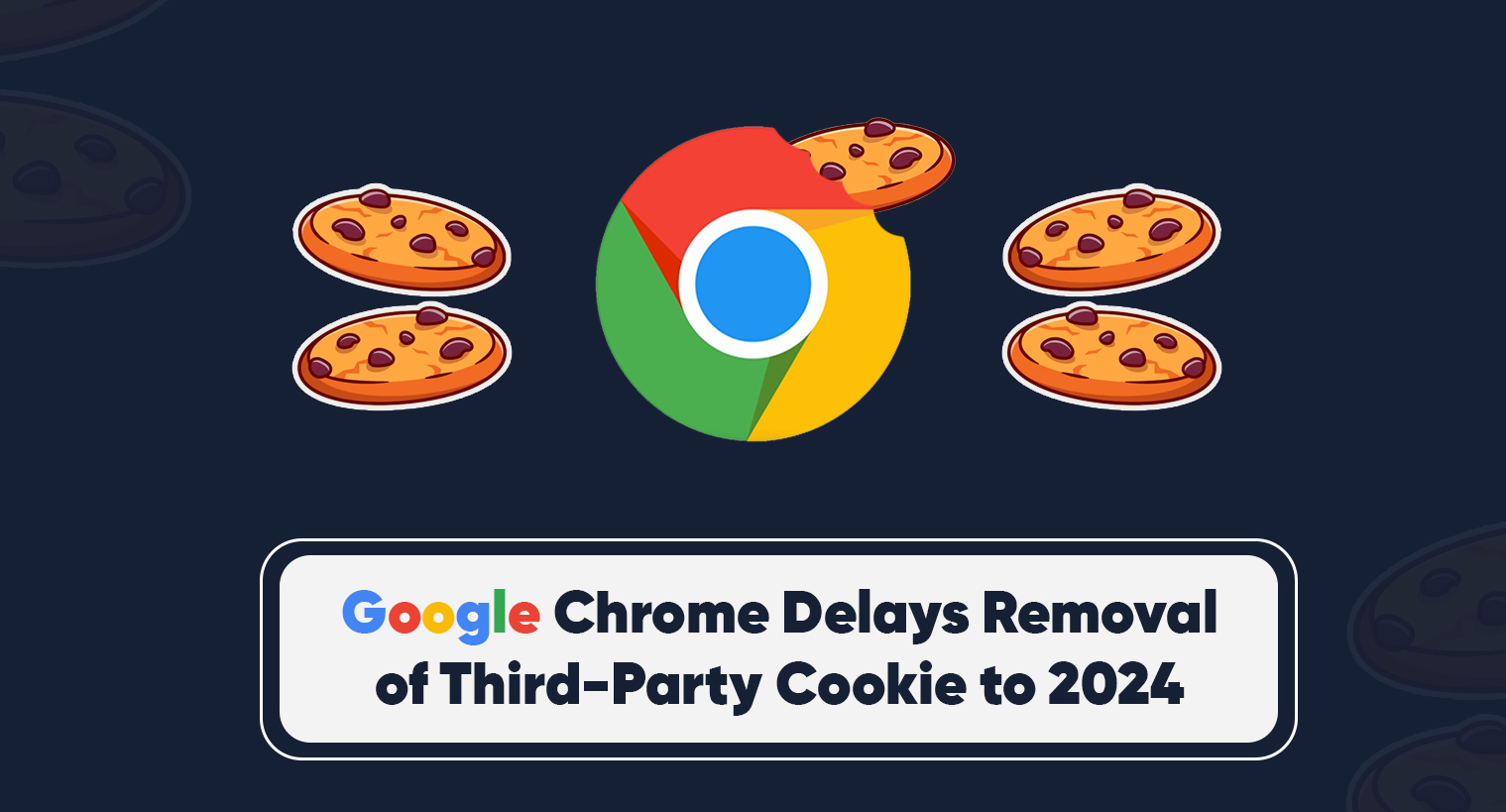
Google dragging its feet for the phase-out of third-party cookies is making headlines around the world. The decision of the ban which was earlier scheduled for 2022, but later pushed to 2023, is not happening anytime until the second half of 2024.
But, what is the cause for this continuous postponement by the Alphabet Inc. unit?
Google has been working with publishers, marketers, and regulators on the Privacy Sandbox API testing program to replace third-party cookies within two years, in early 2020. However, due to the requirement for more time to test and assess the Privacy Sandbox technologies, it is unlikely to happen anytime soon.
“The most consistent feedback we’ve got is that additional time is needed to study and test the new Privacy Sandbox technologies before deprecating third-party cookies in Chrome,” said Anthony Chavez, a vice president at Google, in the article. “In the second half of 2024, we plan to begin phasing away third-party cookies in Chrome.”
Why Should Brands Take this News Seriously?
Some of the brands might take this news as a temporary relief and kill time, instead of finding alternative solutions to third-party cookies. However, it is advised to not get too comfortable with the situation and continue to lean on the outdated system built on identifiers.
The reason for this is as we move into the next phase of online advertising, privacy is not something users will compromise. Their demand for privacy and transparency into how their data is being collected and used has increased even more.
Consumers don’t care if Google delays third-party cookie removal. They are holding brands responsible for protecting their data and privacy. Advertisers that are already putting in the effort to enhance their tactics will be the ones who succeed.
Thus, it is an alarming signal for the ad tech and mar tech industries to start upholding a privacy-first infrastructure today, and not two years from now.
Does Any Suitable Alternative Exist to Third-Party Cookies?
Brands should not waste the golden opportunity of not exploring privacy-safe targeting solutions, like hyper contextual targeting. Silverpush’s advanced contextual advertising solutions are available across the internet – Premium Publishers, Social, Apps, OTTs, and Video across the categories. It can reignite creativity and regain consumer trust with a more personalized ad experience while targeting relevant audiences without requiring their personal data.
The human-augmented AI technology takes a unified approach for contextual level targeting throughout the internet assuring content-aligned ad placement, brand safety, and custom brand suitability, that is unique for each brand. It makes sure there is non-duplicity in reach, by making sure that the same user is not targeted twice on different platforms.
MADDIES 2021: Silverpush Wins Gold in Best Emerging Technology for ‘Haldi Milk’ Campaign
PUBLISH DATE: 29 July 2022
The 7th edition of exchange4media Mobile Awards – The Maddies 2021 was held on November 26th in Mumbai. The award ceremony was held to celebrate the best in marketing.
A total of 650 entries were received this year, out of which 240 entries got shortlisted by the selection board. Among the various categories, Silverpush won Gold under Best Emerging Technology Campaign: Mobile TV/Video, Bluetooth/WiFi, Voice, RBT, etc for the ‘Haldi Milk’ campaign. The campaign was run for Mother Dairy Fruit & Vegetable.
What made the campaign successful? Silverpush’s unbeatable AI technology – ”Mirrors” helped the brand with precise targeting capabilities, brand safety focused and efficient. Traditional advertising campaigns on popular platforms like YouTube and Facebook pose specific challenges for the brands
- Struggle to reach the right audience in the right context at the right time.
- Brand Safety and suitability issues which result in low VTRs, hence the low consumer engagement with the brand.
Mirrors is world’s first in video context detection platform uses deep learning to identify faces, objects, actions, and logos in a streaming video that helps filter the most relevant content specifically tailored for each campaign. Mirrors AI-powered capabilities, detected videos featuring famous FMCG logos. In addition to this, we detected objects, action/ background. Resulting in a striking success of the campaign!
Gracing the Jury Chair for Maddies awards 2021 was none other than Hemant Malik – Divisional Chief Executive (Food Business), ITC. There were other 28 jury members on the board who selected the Final winners. The major criteria to decide the final winners were the entrants who used mobile phones to develop their campaign, generate data, for innovation and to garner extraordinary campaign results.
Silverpush is a Singapore-based digital marketing company which uses AI-powered technology to offer contextual targeting for brands and agencies globally. With the help of deep learning technology, we use moment targeting to produce engaging ads which are then deployed to the target audience at the right moment in a brand safe & suitable environment. It is backed by it’s pioneer products – MIRRORS and PARALLELS. Get in touch with us!
Are Marketers Prepared for a Cookieless World?
PUBLISH DATE: 28 July 2022
By 2023, Google will eliminate third-party cookies in its Chrome browser. Apple has already started o make changes to its Identifiers for Advertisers (IDFAs). Third-party cookies for a long time have acted as a catalyst for the advertisers who are heavily invested in digital. The main objective of third-party cookies for the advertisers was to understand the consumer behavior, what are their preferences, where they are located, to target them with precision.
In terms of browsing, Google chrome holds the largest market share, third-party cookies help advertisers to personalize, target, and retarget their customers. Now marketers across the world are looking for new alternatives for targeting and advertising on the internet.
According to an e-Marketer report, around 36 percent of marketing professionals worldwide have said that once the third-party cookies are gone, the customer purchase history will be their most valuable source of data. Meanwhile, 32 percent expect social media profiles as key, and 31 percent reply on website registration for the data source.
This is going to be a challenging scenario for marketers as they are all dependent more on first-party data. One of the sector which is going to be highly affected with the ban on third-party cookie is automobile. For example, Maruti Suzuki has a Customer Data Platform (CDP) in place in which data regarding all interaction with the consumers are collected. It not only consist information on transaction but also interactional data that is obtained while conversing with the customers.
In such a scenario, brands will have to engage in probabilistic audience modelling— Contextual advertising. It is a mechanism where data is generated from a user’s browsing behavior. The data obtained is then compared to deterministic data points, also known as first-party data truth. This can be done with the help of tools like artificial intelligence and machine learning.
Startup brands in India that are ahead of the tech curve highly believe privacy, personalization, and measurement can all be achieved together. For instance, tracking pixels—a 1×1 pixel graphic that identifies users’ behaviour, site conversions, web traffic, and other similar cookie metrics which are hidden in the platforms ranging from banner ads to emails – captures information instead of cookies. Indian advertisers, for now, with investment power, are ready to fight the cookiepocalypse.







